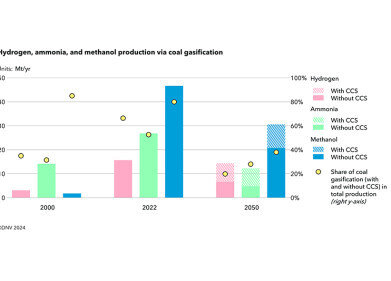Green Energy
Is the Cost of Pollution on the Up?
Jun 27 2021
New ground was made in the fight against climate change last month, as industrial carbon permits in the EU reached €50 per metric tonne for the first time. That landmark indicated that the cost of European pollution increased by more than 50% in the last year, signalling that the tide may be turning with regard to industrial emissions of carbon dioxide and other damaging greenhouse gases.
Those prices are arrived at via governmental auctions, which set aside at least half of the proceeds from their sale for environmental initiatives. As such, the rising price of pollution is good for the planet on two fronts; not only will the additional expense encourage industrial firms to investigate more sustainable means of operation, but it will gift governments extra investment capital for green projects.
Down and then up
Carbon futures suffered a slump in early 2020, after the outbreak of the global pandemic forced governments and companies to temporarily shelve their plans. One of the lesser publicised environmental implications of coronavirus was the bottoming out of the market, with carbon trading for as little as €15 per metric tonne in March as industrial activity came to a near standstill in many parts of Europe.
However, the announcement of the European Green Deal in July signalled Brussels’ intent to incorporate sustainability as a key component of its recovery from the pandemic, breathing life into the market once more. Futures exceeded €30 per metric tonne for the first time in over 10 years even prior to the announcement of the Deal, which boosted its price further shortly afterwards.
Now, it has reached the considerable milestone of €50.05, the first time in history that carbon has traded above €50 for a metric tonne. Meanwhile, calls to buy permits at €60 per tonne now have the highest interest on the ICE exchange. Some speculators were even more optimistic, predicting over €75 per tonne by the year’s end.
Industry must adapt
What that means in practical terms for industrial emitters is that it will quickly become more and more expensive for them to continue emitting carbon into the atmosphere. Instead, they will be forced to turn to more environmentally friendly means of power generation such as biofuel to keep their furnaces burning and the lights and heating in their factories aflame.
Another possible avenue of investigation is the sphere of carbon capture and storage (CCS), which removes carbon from the emissions stream of a power plant or industrial facility before it has a chance to contaminate the atmosphere. The carbon is then pumped underground for storage, or else recycled to help manufacture plastics, aid in fracking efforts or put to some other use.
While the price rises might not inhibit the performance of industrial players too much in the short term, there will soon come a tipping point beyond which it is simply financially unviable for them to continue operating on the same path. Some market experts have suggested such a turnaround could occur when the futures market exceeds €100 per tonne – which could well happen in the foreseeable future if trends continue.
Events
May 05 2024 Seville, Spain
May 13 2024 Munich, Germany
May 23 2024 Beijing, China
May 23 2024 Beijing, China
Jun 10 2024 Algiers, Algeria
.jpg)













